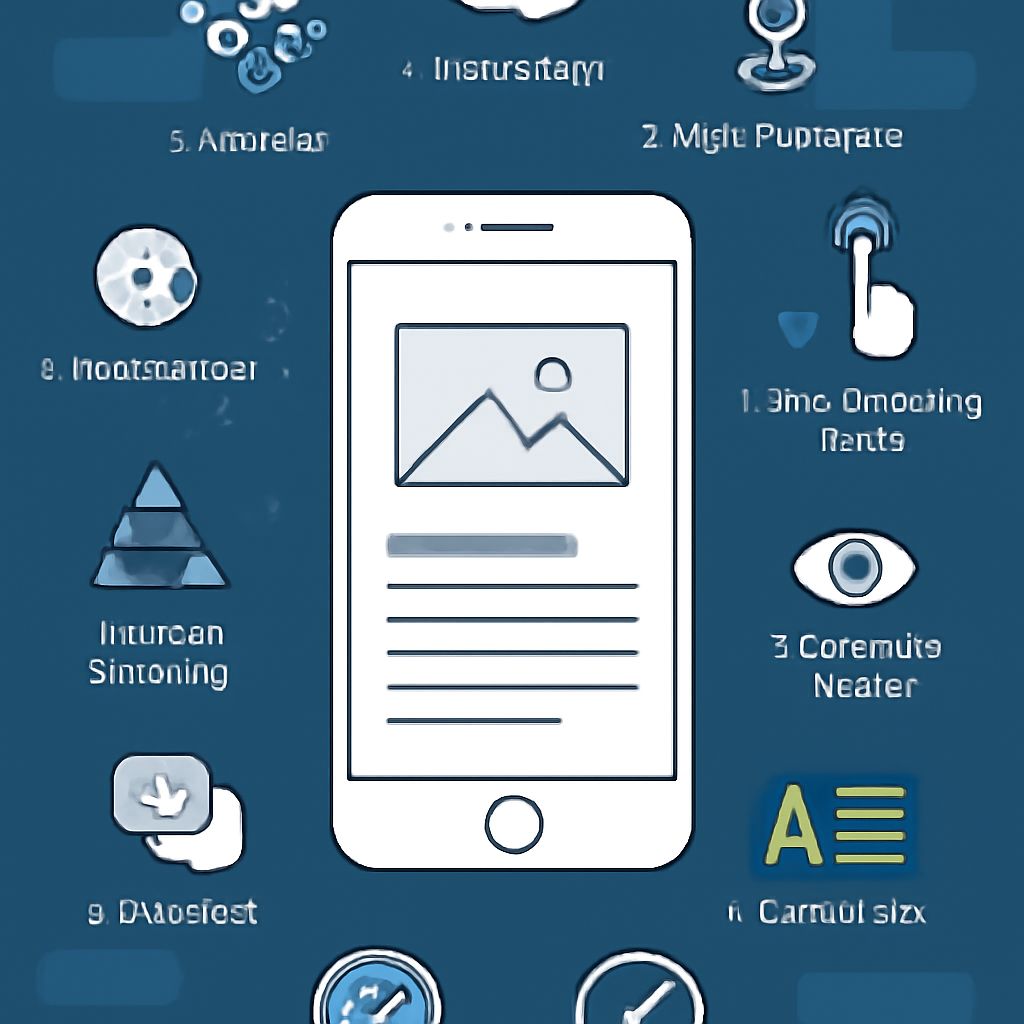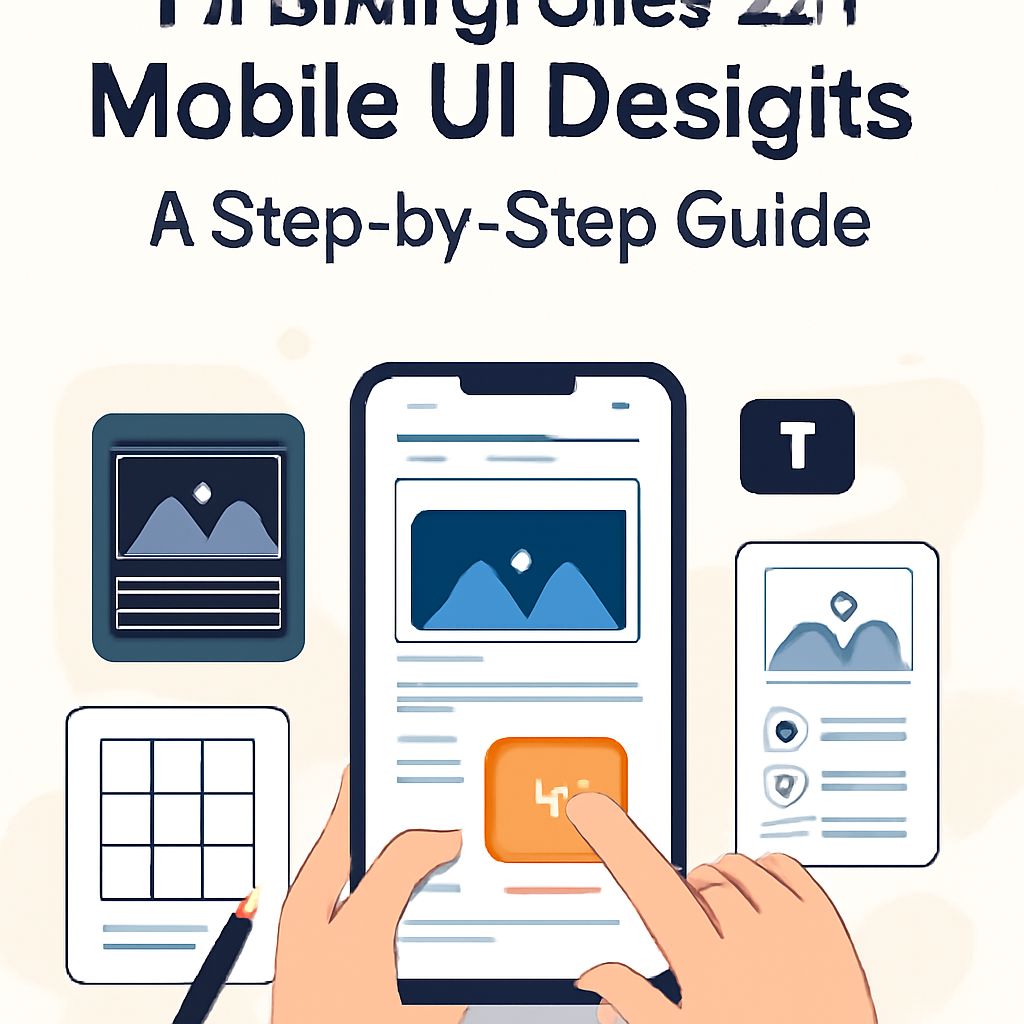Mastering Mobile UI Design: Tips and Trends for 2024
In a world where smartphones have become an extension of ourselves, the importance of mobile UI design has never been more critical. As we move into 2024, mobile user interface design continues to evolve, driven by new technologies and changing user expectations. Designers must stay abreast of the latest trends to create compelling, intuitive, and effective mobile applications. This article explores the essential tips and emerging trends in mobile UI design for the coming year.
Understanding the Basics of Mobile UI Design
Mobile UI design revolves around creating interfaces that are simple, efficient, and user-friendly. The primary goal is to facilitate user interaction with the application, making the experience as seamless as possible. Here are some foundational elements:
- Simplicity: The best mobile interfaces are simple and easy to navigate. Overcomplicating features or design elements can confuse users and detract from their experience.
- Accessibility: Ensuring that your application is accessible to all users, including those with disabilities, can significantly enhance user satisfaction and broaden your audience.
- Responsiveness: A good mobile design responds quickly to user interactions, providing immediate feedback.
- Consistency: Maintaining a consistent style and layout throughout the application helps users learn how to use it more effectively.
Key Trends in Mobile UI Design for 2024
As we look to the future, several trends are set to shape the mobile UI landscape in 2024. These trends reflect the growing demand for more personalized, immersive, and technologically advanced user experiences.
1. Dark Mode Dominance
Dark mode isn’t new, but its popularity continues to rise. The aesthetic and functional benefits of reducing eye strain and saving battery life make dark mode a staple. In 2024, expect to see more applications offering robust dark mode options, with designers focusing on perfecting contrast and readability.
2. Voice User Interfaces (VUI)
With the increasing integration of AI assistants like Siri, Alexa, and Google Assistant, VUI is becoming a significant part of mobile UI design. Designing for voice interactions involves creating intuitive, user-friendly voice commands and feedback systems, which can greatly enhance user engagement.
3. Microinteractions
Microinteractions are subtle UI elements that provide brief feedback to the user. These include small animations or vibrations that respond to user actions, like a button click or a swipe. They improve the overall user experience by making interactions more engaging and providing instant feedback.
4. Augmented Reality (AR) Integration
As AR technology becomes more advanced and accessible, its integration into mobile UI design is set to become more prevalent. Applications that incorporate AR features can offer users a more interactive and immersive experience, which is particularly beneficial in sectors like retail, education, and entertainment.
5. Customizable Interfaces
Personalization is a key driver of user engagement. Allowing users to customize their interface according to their preferences can significantly enhance user satisfaction. Features like adjustable layouts, color schemes, and font sizes can make the application more appealing to a diverse user base.
Best Practices for Mobile UI Design
While it is essential to keep up with trends, adhering to best practices ensures your design remains user-centric and effective. Here are some best practices to consider:
- Prioritize Content: Ensure that the most important content is easily accessible and that the interface does not distract from it.
- Test Your Design: Conduct user testing at various stages of the design process to gather feedback and make necessary adjustments.
- Optimize for Speed: Mobile users expect fast loading times. Optimize images and code to ensure smooth performance.
- Use Intuitive Navigation: Navigation should be straightforward, allowing users to find what they need with minimal effort.
| Design Element | Importance | Trend in 2024 |
|---|---|---|
| Dark Mode | High | Enhanced Contrast and Readability |
| VUI | Medium | Increased Integration with AI |
| Microinteractions | Medium | Greater Use for User Engagement |
| AR Integration | High | Expanded Use in Various Sectors |
| Customizable Interfaces | High | Enhanced Personalization Features |
Conclusion
As we embrace the innovations in mobile technology, mastering mobile UI design becomes both more challenging and more rewarding. By keeping up with trends like dark mode, VUI, and AR integration, designers can create applications that not only meet current user expectations but also stand the test of time. Remember, the ultimate goal of UI design is to foster an exceptional user experience, and by adhering to best practices and leveraging new trends, you can build applications that truly resonate with users in 2024 and beyond.
FAQ
What are the key trends in mobile UI design for 2024?
In 2024, key trends include minimalistic design, personalized user experiences, augmented reality integration, and the use of micro-interactions to enhance user engagement.
How important is responsive design in mobile UI for 2024?
Responsive design remains crucial in 2024 as it ensures that mobile applications provide a seamless experience across various devices and screen sizes, improving user satisfaction and retention.
What role does accessibility play in mobile UI design?
Accessibility is vital in mobile UI design to ensure that apps are usable by everyone, including those with disabilities. This involves implementing features like voice control, text-to-speech, and high-contrast modes.
How can personalization enhance mobile user interfaces?
Personalization enhances mobile UIs by creating more relevant and engaging user experiences through customized content, recommendations, and user-specific interface adjustments based on behavior and preferences.
What are micro-interactions and why are they important in mobile UI design?
Micro-interactions are small, interactive design elements that guide users through tasks, provide feedback, and enhance the overall user experience by making interfaces feel more intuitive and engaging.
How is augmented reality influencing mobile UI design?
Augmented reality is influencing mobile UI design by providing immersive experiences that blend digital content with the real world, enhancing functionalities in sectors like retail, gaming, and education.




